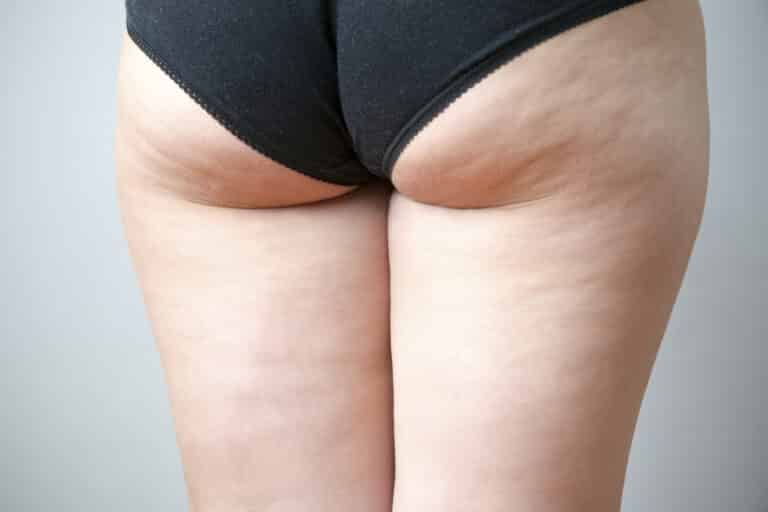The Art of Genital Beautification: Labiaplasty and Clitoral Hoodectomy Unveiled
Many women are surprised to learn that their pubic area, from the labia to the mons pubis and more, can all gain weight, become misshapen, and experience a variety of issues that are considered to be not very aesthetically pleasing, uncomfortable, and cause pain and anxiety – especially in intimate settings or when wearing bikinis.
At the Aesthetic Centers, our board-certified plastic surgeons use a variety of techniques to help shape the labia and tighten the vagina in a way that is more aesthetically pleasing and comfortable, to help give you back that confidence in your femininity. If you’re struggling with your pubic area, you may be a good candidate for genital beautification procedures such as labiaplasty, clitoral hoodectomy, and vaginoplasty.
What is Labiaplasty?
Labia reduction or labiaplasty is the process of surgically removing the extra external folds of the skins that surround the entrance to your vagina. It is also sometimes employed to repair the deformed labia following childbirth, a disease, or an injury. In addition to labiaplasty, clitoral hoodectomy can be performed to enhance a woman’s sexual function.
Labia reduction has been a common practice since late 1990s. The earliest technique is by straight amputation where the elongated labia are cut off and the protuberant sections are held back together by sutures.
The Potential Candidates
Labia reduction is required either for aesthetic or functional reasons or both. An elongated labia can cause a feeling of discomfort in terms of fitting into skimpy clothing. It is also sometimes an issue for women who get embarrassed with their sexual partners due to their condition. An elongated labia can also cause a number of physical discomforts, including an inability to do certain activities or exercise. Some women also complain that their elongated labia can cause painful sensation when drawn inside them.
Any woman can undergo the procedure of labia reduction. It is for women who have a problem with elongated or asymmetric labia and some other genital issues. It can be performed in women, young and old, who have that intent of achieving a better look and a more positive perspective for themselves.
The Procedure
Labia reduction is mostly performed as an outpatient procedure. As with other cosmetic surgery procedures, labia reduction is highly individualized. The patient’s need for it and the appropriate technique to be used depends on the surgeon’s diagnosis.
After the procedure, the patient may experience mild to severe discomfort, which can be dealt with ease by medication treatments. The recovery period is between one and two weeks.
Based on statistics, most women who go through labiaplasty are found to be satisfied with the results.
The Labiaplasty Surgery
Labiaplasty is a well known and popular procedure for shaping the labia, and ultimately changing the look of the vagina. It is very common with women that have large, often misshapen labia that have become stretched and enlarged by pregnancy, intercourse, or weight gain.
The labiaplasty procedure takes approximately 1.5 hours and is performed under general or local anesthesia. At the Aesthetic Centers, our surgeons focuse on using incisions on the natural folds along the labia, so that you have the least amount of scarring possible and the most aesthetically pleasing result.
All excess skin from either the labia minora or labia majora will be removed carefully, so as not to damage the labia, nor prevent the labia from protecting the clitoris and vagina (which is its primary purpose).
There are several possible techniques available, and your surgeon will discuss the option that makes the most sense for you. Some of these options include:
- Trim Method – Used on many patients with problems with their labia, the trim method is designed for the removal of the dreaded “dark labia” (labia that appears darker in color from the pink of the vagina) as well as removing much of the length of the labia minora. The labia is then resewn. The incision is placed in a location where ideally the scar will be hidden, but scarring is still possible. One of the downsides of this method is that the labia tends to look “too perfect” because the natural edges of the labia have been removed.
- Central Wedge Method – Although the wedge method is also designed to reduce the size of the labia, it does so by making an incision in somewhat of a “V” shape (like a wedge). The incisions are then sewn together, which give them a healthier looking straight line while preserving the natural look of the labia. The scars are also often well-hidden with this method, but some dark labia may remain.
- De-Epithelialization – Similar to the wedge technique, the de-epithelialization technique is designed to keep the natural shape of the labia. However, rather than remove a significant portion of the labia, this method removes the outer most portion of the labia and keeps the inner most portion, so the vagina doesn’t lose its natural appearance at all. It is best for patients that struggle with very large labia, but otherwise are happy with keeping their natural labia look.
- Labiaplasty: Benefits and Risks
The Benefits
We all want to look good. That is a given. Cosmetic surgery is there to help people achieve their goals for looking good and in the process, feeling good about themselves. Labia reduction can undoubtedly drown out embarrassments and anxieties that women usually experience along with an asymmetrical labia. For that reason alone, labia reduction can be a good treatment of choice.
But labia reduction does not only provide aesthetic benefits. It also eases certain physical discomforts that come with an elongated labia. Some women suffer from constant irritation when wearing tight underwear or pants with an overly large labia minora. Some women also complain of painful sensations when their labia majora are drawn inside them during sexual penetrations. An elongated labia can also cause discomfort in women who participate in strenuous activities or engage in sports.
With the simple procedure of labia reduction, all those discomforts could go away.
The Risks
Labia reduction involves surgery. Whenever surgery is involved, you cannot discount the complications that usually come with it.
Most of the time, patients come out of the surgery satisfied with the results. After a few weeks, they are expected to return to their normal everyday activities with ease. The sutures used in labia reduction dissolve spontaneously so physical removal is no longer required. To heighten your protection against labia reduction complications, your personal hygiene must be increased. This procedure is done in an area that is difficult to keep clean so the best way to avoid the dangers is by washing every so often with your doctor recommended solution.
Combining Labiaplasty with Other Cosmetic Procedures
Labiaplasty can also be combined with additional vaginal procedures, such as a clitoral hoodectomy. If you’ve been considering a labiaplasty, and reshaping your entire vaginal area, don’t be afraid to have a conversation with our plastic surgeons with years of experience working with thousands of satisfied patients.
Clitoral Hoodectomy
What is a clitoral hoodectomy?
A clitoral hoodectomy, or clitoral hood reduction, is a surgical procedure that is performed in order to remove excess skin around the clitoris which causes the clitoris to look enlarged or uneven.
Why is it performed?
Many women who have excess skin on the sides of the clitoris find that they are unable to achieve orgasm, because the clitoris is covered with too much skin tissue. Because of the excess skin, sensation is reduced, or in some cases, eliminated entirely. Women may be frustrated with the exterior appearance of their vagina and clitoris, leading to decreased self-esteem.
How does it work?
The clitoral surgery is a quick and effective procedure. It is often performed under local anaesthetic, although in some cases general anaesthesia may be recommended by your doctor, depending on your unique case. Our plastic surgeons will remove excess tissue from the clitoral hood without affecting the clitoris itself. Once the excess skin has been removed, the remaining tissue is stitched together with very thin absorbable stitches. These stitches are absorbed by the body after a short period of time.
This short procedure enables the patient to return to her day-to-day activities quickly.
The benefits of the procedure include better sensation during sex, enhanced self-esteem and better quality of life.







